Science of Weight Loss

There are many keto and carnivore promoters (and some doctors) that promote adding tons of fat and eating the fattiest cuts of meat when weight loss is the goal. This is counter to the goal of body fat loss and this article will explain why.
I follow the science and biology of how our bodies work for the best results in weight loss and healing. I have had over 20 years working with clients and finding the best methods to do this with hundreds of thousands of clients (CLICK HERE to see a small sample of my testimonies from clients).
All you have to do is answer the question “where does the fat we eat go?” Answering this question is what those promoters of this method of adding lots of fat when fat loss is the goal never tell you.
Where Does the Fat We Eat Go?
The fat we eat can really only go two places in the digestive tract. You can either absorb it into the bloodstream, or pass it straight through you into the stool. Let’s look at each of these and see what the science says.
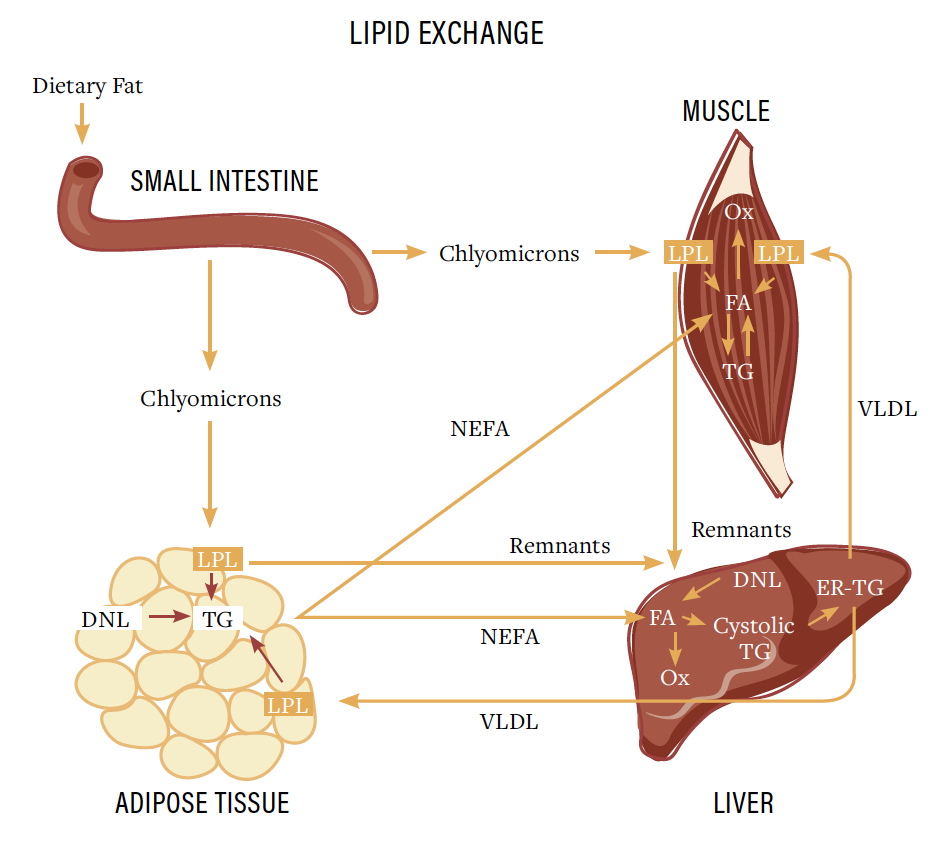
Source: Our book “Keto.” which you can get HERE.
Some keto and carnivore advocates will say that it goes right through you. This just doesn’t make any sense from a biology or evolutionary perspective. Calories were precious back in our hunter gatherer days. If our body just dumped fat when you were eating a lot of it in the summer from all the animals you hunted, you would never make it through the lean winter months without stored fat. And if you flushed fat through your colon in larger amounts (over 10g a day) you would be living on the toilet. Remember Olestra, the fat that went right through people undigested (the infamous WOW chips) and they had to put a label on them warning of anal leakage, from an extra 10-20 grams of fat going through the stool.
Studies also don’t support this idea. In THIS study there was no change in fecal output of fat when the dietary fat was 62 grams a day or 152 grams a day. It was constant and always about 8 grams a day.
Almost all the fat in your diet ends up in your bloodstream. From there almost all of it is either used as fuel, or stored in our fat cells. Unless you are in the middle of running a marathon, the vast majority of it will be stored in your fat cells. That is just how the body works! There is no other place for fat to go and you don’t want it sitting around in the blood (which would mean sky high triglycerides).
Almost all fat that comes in through the diet ends up in the bloodstream as chylomicrons (see above chart Lipid Exchange). At this stage they have two places they can go, either be used as fuel in the muscle and other tissues or be stored in our adipocytes (fat cells). Studies have shown that most of the fat first goes to our fat storage before later coming out of fat storage and used as fuel (as free fatty acids bound to albumin and burned directly in muscle and tissues). The mobilization of fat from your fat stores to be used as fuel is called lipolysis (more on that HERE). Eating dietary fat will slow down or stop lipolysis quickly as the body doesn’t want an over supply of fat in the blood.
So what puts fat into storage? There are a couple mechanisms. The main and primary mechanism is insulin. Yes, fat does raise insulin levels, not as much as protein or carbs, but it does raise insulin a bit. And that is enough to store it in your adipose tissue (fat cells).

Source: Our book “Keto.”
Insulin does two things. It helps store fuels (fat and glucose) into the tissues. Either muscle (glycogen) or adipocytes (fat). It also acts as a net to hold back fat or glucose from being released from the fat cells or muscle. This makes sense because if you have a large amount of glucose or fat coming in through the meal, the body doesn’t want an oversupply of fuel in the blood so it stops adding fuel to the bloodstream from your own stores (stops lipolysis) and starts storing it to lower the blood fuel levels.
I would call this role of insulin, the holding back the flood gates for fuel in the blood stream from your storage (fat cells), the primary role and most important role of insulin. Many will say it is to store fuels, but holding back fuels is even more important and requires more insulin throughout the day than any transient spike from eating. This is what would kill type 1 diabetics before we had exogenous insulin. The uncontrolled dumping of fat (and glucose) into the blood from your own storage (fat cells, muscles and liver).
If weight loss is your goal, storing a bunch of fat into your fat cells is not what you want to do. You want a negative fat flux (more fat coming out of adipocytes than going back in, we explain fat flux in detail in our book “Keto.” HERE). In addition to these issues, you are not getting enough protein so you are losing precious lean mass over time. Not what we want as we age or for our BMR levels. More muscle means a higher BMR and more calories you can eat in maintenance.
Almost all the fat you eat ends up in your fat cells. That is how your body works. So if losing body fat is the goal, the more fat you add to the diet the less is burned off the body. Burn more of your own body fat for fuel, not dietary fat.
“And just like that 10 lbs gone. I’m so astonished how quickly these lbs have come off after being stalled for more than six months on high fat carnivore. I started the Emmerich woe on Sept 19, 2022. A big thank you to Maria and Craig. I bought the psmf package (on Keto-Adapted.com) and now I’m a member. So excited for this new journey. Their meal planner is awesome.”

I have had tons of people come to me that follow that type of advice (adding lots of fat) and are just gaining weight or are stalled. In some cases up to 6 years stalled or without weight loss. You might lose weight at first following that (going from the standard American diet to anything whole foods based will result in some weight loss) but you will stall. And many people with leptin resistance (metabolically damaged) will only gain weight following that advice as they don’t get the same satiety signals due to their obesity and insulin resistance and will over eat. You have to lose body fat to help reverse the insulin resistance. Reducing dietary fat will get you that result faster. Macros are the most important thing for weight loss.
You can get proper macros HERE (Make sure to read notes above the calculator about protein goals).
“I did high fat carnivore for 18 months and my blood sugars doubled and as a diabetic I was really ill.
My triglycerides were very high too. I got diagnosed with non alcoholic fatty liver. I got told by a lot of well known carnivore advocates that I was lying and trying to ruin the carnivore name. I have now done your PSMF and my blood sugars have gone down by half. My morning fasting glucose is amazing, best it’s ever been. I am fat and I have over reached my threshold clearly. I am glad I found you and other low energy advocates.”
PERSONAL FAT THRESHOLD
Most importantly, if you are close to your personal fat threshold, adding a lot of fat will make you metabolically even more damaged. Just this week I had a client come to me that was following that bad advice but he was a lean type 2 diabetic and this close to his personal fat threshold. So the all the fat he was adding in the diet had no place to go. His fasting glucose kept rising up to 200, triglycerides went way up too. All while eating carnivore (no carbs). This video explains what was happening to him (and where the fat we eat goes).
WHERE ARE THE NUTRIENTS?
I follow biology and science to get the best results and what is the healthiest long term too. Eating the most nutrient dense foods will enable both of those goals.
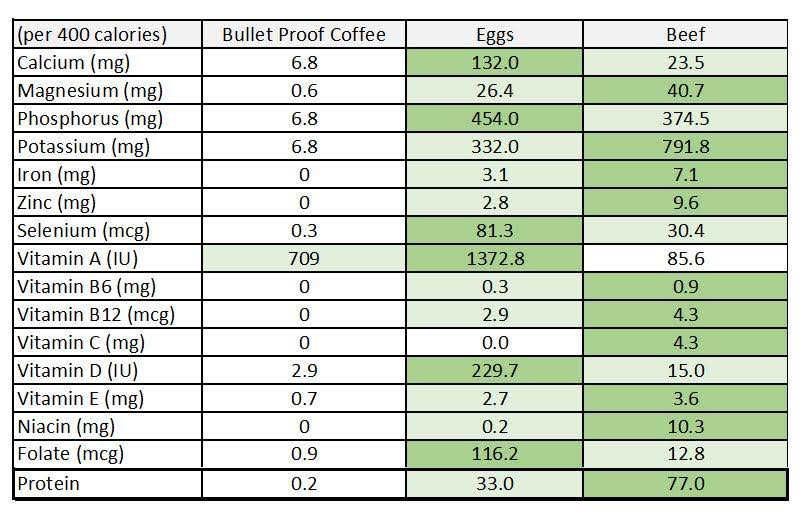
Many advocates will also state that “you need high fat for the nutrients to heal.” Fat is almost entirely just energy, and has very little micronutrients (vitamins and minerals). As the above chart shows, if healing is what you what, you what more protein, not fat. The fat (butter, tallow, etc.) has a little vitamin A and that is about it. It has only trace amounts of any other micronutrients. The animal protein is where you get most of your nutrients (muscle meat, organ meats, etc.).
There is no magic that suddenly appears at 80% dietary fat or some elevated blood ketone level. If you are being told this, you need to unfollow that person as there is zero evidence or science supporting those claims. Again, all of the testimonies HERE (and tens of thousands of others I have received) were done without measuring ketones and without 80% dietary fat. Get the macros right using a nutrient dense whole food low inflammation diet and let the body do what it has to heal and lose weight.
“Thank you for the mct oil video and for all that you do. The trend is everywhere. I switched to eating a high fat (over 200grams a day) approach with a coach and gained so much weight. They kept saying my body will health and then my body would lose the excess fat. Going back to using it as a flux to lose this excess body fat.”

One more note about fat. I have always told my clients to buy the best quality meats you can afford. Organic, grass fed, etc. is always best. But it can be very expensive and out of reach for many people. So I tell them to buy the best quality they can afford, even it if is regular store bought meat. But the thing is, the issue with non-grass fed, non-organic meats is primarily due to what is stored in the fats. Toxins are stored in your fat cells (see THIS article for more on Environmental Toxins). So an animal that isn’t organic, exposed to pesticides, antibiotics, etc., will store those toxins in its fat cells. Also, the beneficial omega-3’s and less omega-6 that you get from grass fed is also in the fat, not the protein part of animal proteins. The protein part in non-organic cows is largely the same as the organic options. Similar nutrients and amino acids. The fat part is where the issues lie. So if you are not able to buy the grass fed options and are eating high fat meats, you are getting even more toxins than if you ate the leaner cuts. Not good for healing either. If you are in maintenance and need higher fat, but don’t want the toxins (and can’t afford organic grass fed), select leaner cuts and add your own quality fats (like these).
So if weight loss is your goal, dial the dietary fat down a bit. If healing is the goal, increase the nutrient dense foods (animal protein being the most nutrient dense). Both of these together will be helpful for weight loss and healing.
Less dietary fat and more protein.
“Thank you SO much for these macros. I cannot believe how much I was derailing my fitness journey by eating a diet comprised of 70 percent fat! After following your suggested macros for just a few days, I am feeling so much better, weighing less and my appetite is completely manageable. I realize now I was just flooding my body with fat, which had to be messing with my blood sugar, cravings, and appetite. Maria, you are so right — there is a ton of misinformation out there about keto and I fell victim to it. When I first started doing keto earlier this year, I was following a high protein-moderate fat diet, but I switched to higher fat when I began to stall out based on recommendations from keto influencers. I also was eating a lot of dairy and nuts, which I have eliminated based on Maria’s advice. I just cannot thank you enough for helping me get back on track.” – Robyn
How to Lose Body Fat and Reverse Insulin Resistance
We will do a longer post on this topic soon, but for now let’s review. What is the best way to lower body fat and reverse insulin resistance quickly? By shrinking your fat cells and maintaining or growing your lean mass (mainly muscle). This gives glucose more places to go (muscles) and by shrinking the fat cells you reverse the fat cell insulin resistance. We explain this in the above YouTube video.
To do this with the diet, the diet just needs to reflect what you want the body to look like. Eat leaner meats and less dietary fat and your body will become leaner with more muscle and less body fat. It really is that simple. And doing this while keeping other fuels low (carbs, alcohol) you control hunger and make it easier to maintain as a lifestyle long term.
Less fat in the diet forces the body to burn more of your own body fat for fuel.
More protein in the diet drives satiety and ensures you maintain or build muscle. Plus it gives you more vitamins and minerals for healing.
Share with your friends who want to find health!
#knowledgeispower
TESTIMONY OF THE DAY
“Today was a good day and I wanted to share. This morning I had my quarterly checkup and my doctor took me off that darn statin and decreased my BP med by 1/2!
BP was 120/54 this morning. I’m so excited to be rid of that statin and I think in 3 months, I’ll be rid of the blood pressure medication also.
I’m only 28 pounds from my goal weight having lost 170 so far. NONE of this would have been possible without Maria Wojcik Emmerich and Craig Emmerich!
Thank you for giving me my life back! “ Jane
Most people I consult are doing keto totally wrong. Get fast results with the my Mind-blowing Keto School!
Click HERE to check out my supplement plans!


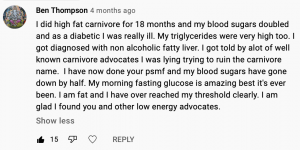










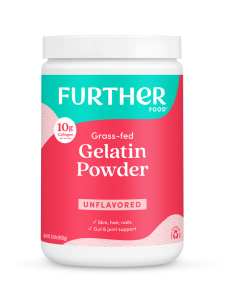


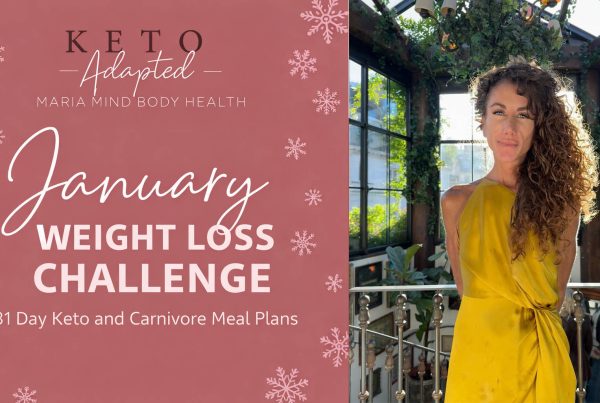

What a brilliant and comprehensive post. Thank you so much.
Thank you so much!!
Thank you for your support 🙂
As one who has tried Keto, and continues to try, this article explains things so well! I will apply this knowledge to husband’s & my diet.
Buying the book is an easy decision; it probably should have been the 1st book I bought from you, lol! Making sure the Macros are correct is also something get right. Thank you.
Thank you!
I have been following you both for a long time and have a lot of issues that being overweight exasperates greatly. Off and on keto has made it worse I think, but I could always lose weight if I jumped back on the wagon. I decided this time to try carnivore and started listening/reading other carnivore “coaches” during that initial stage. 1. Because after the last time I lost a ridiculous amount of hair. I can see my scalp and 2. I want this attempt to last for good. Not just to drop weight. I’m 53 (not yet in menopause) and something is changing that feels not right. They ALL said the solution I needed to fix things was an 80/20 fat to protein! And that I lost all my hair due to low fat and under-eating. So I tried it. I’m up 10 lbs and my hair is thinning further! Thank you for this. Understanding the science was the key.
That much hair loss typically means you aren’t getting enough protein. I’m glad this blog post is helping clear things up for you 🙂
Thank you for pushing back against the push back and making the science easier to understand.
Thank you for your support! 🙂
Hi Maria –
Really enjoyed the read and video. So glad you both break down what so many bad influencers speak about. They are not true to any profession as you are. Appreciate you so much!!
Thanks for reading/watching!
One of the key benefits of high fat that I keep hearing is about hormonal health. I would love to know what the science on that actually is.
The body requires a certain amount of healthy fats for proper hormone function and balance. My meal plans and programs provides that. Dietary fat can do one of two things: be used as fuel or stored for later. That’s where the problem lies with all these high fat diets. It’s counterproductive for weight loss.
Hi Maria and Craig,
Thank you for this video and the post. You gave information I have never heard before. I have been low carb/keto for 12 years. It has helped me maintain well but every once in awhile I fall off the wagon. I figured out that eating a lot of fat AT THE BEGINNING might help one to get off the carbs and sugar. But as you said you can’t lose fat if you are eating too much of it. So once you stall you just have to get off a lot of the fat also. But doing PSMF does help lose weight even faster. I tried it last spring, got sidetracked and am going back to it.
Thanks for reading, Pamela! 🙂
This actually made sense. I’m a newbie (my first week as a carnivore) so thank you for sharing your knowledge and recipes! 🙏🙏🙏
Awesomeness! Thanks for reading 🙂